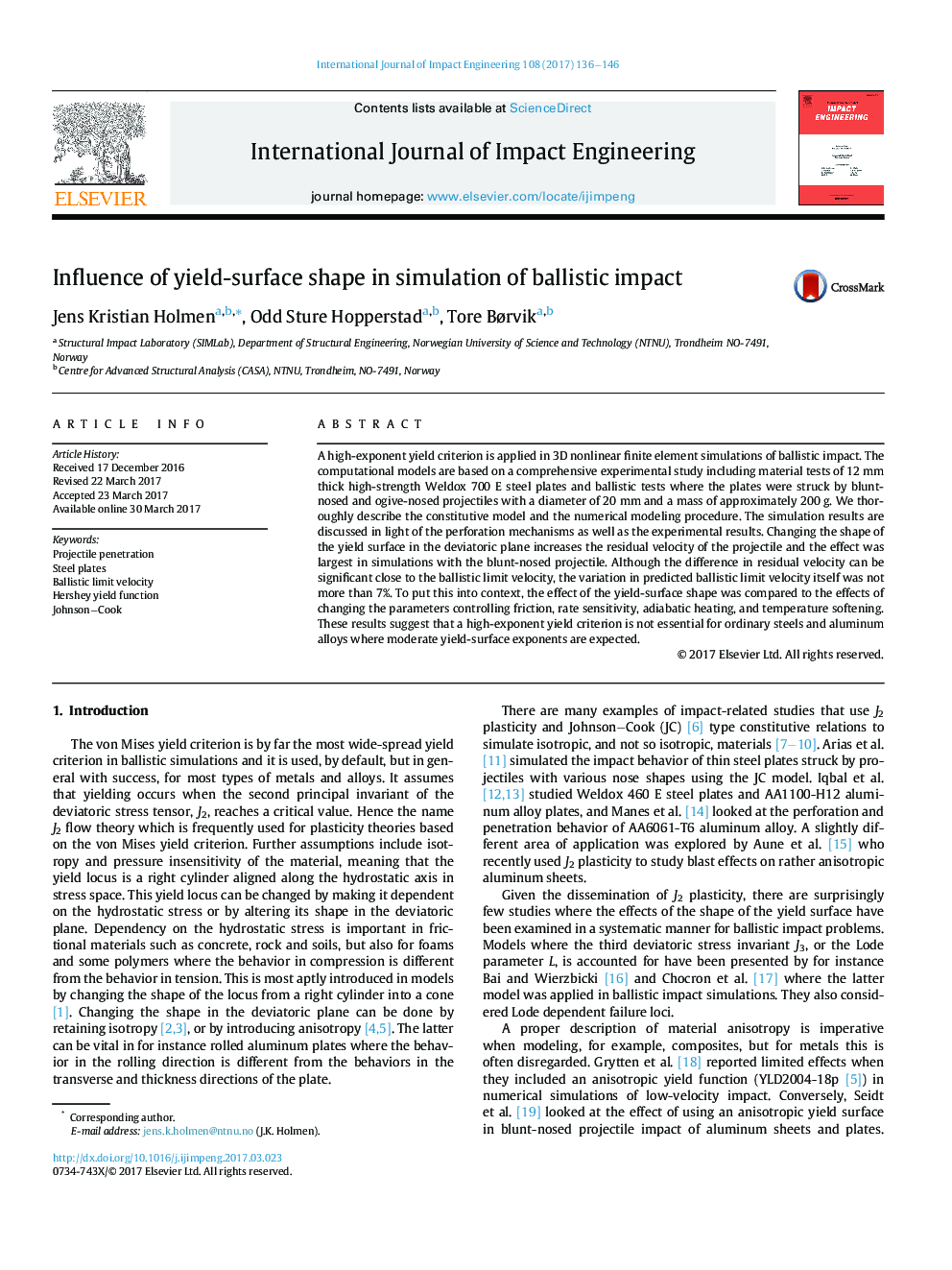| Article ID | Journal | Published Year | Pages | File Type |
|---|---|---|---|---|
| 5015516 | International Journal of Impact Engineering | 2017 | 11 Pages |
â¢We present simulations of projectile impact with blunt and ogive-nosed projectiles.â¢The exponent in the Hershey yield surface varied from 2 to 32 in the simulations.â¢We present studies on strain rate, friction, adiabatic heating and thermal softening.â¢The von Mises yield surface was found to be adequate for common materials.
A high-exponent yield criterion is applied in 3D nonlinear finite element simulations of ballistic impact. The computational models are based on a comprehensive experimental study including material tests of 12Â mm thick high-strength Weldox 700 E steel plates and ballistic tests where the plates were struck by blunt-nosed and ogive-nosed projectiles with a diameter of 20Â mm and a mass of approximately 200Â g. We thoroughly describe the constitutive model and the numerical modeling procedure. The simulation results are discussed in light of the perforation mechanisms as well as the experimental results. Changing the shape of the yield surface in the deviatoric plane increases the residual velocity of the projectile and the effect was largest in simulations with the blunt-nosed projectile. Although the difference in residual velocity can be significant close to the ballistic limit velocity, the variation in predicted ballistic limit velocity itself was not more than 7%. To put this into context, the effect of the yield-surface shape was compared to the effects of changing the parameters controlling friction, rate sensitivity, adiabatic heating, and temperature softening. These results suggest that a high-exponent yield criterion is not essential for ordinary steels and aluminum alloys where moderate yield-surface exponents are expected.
